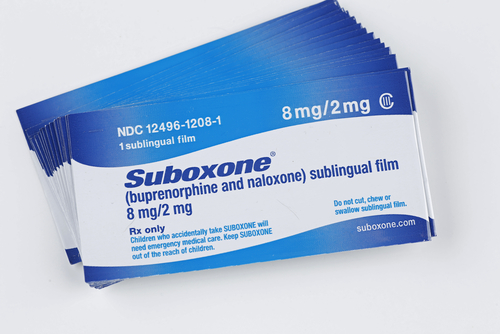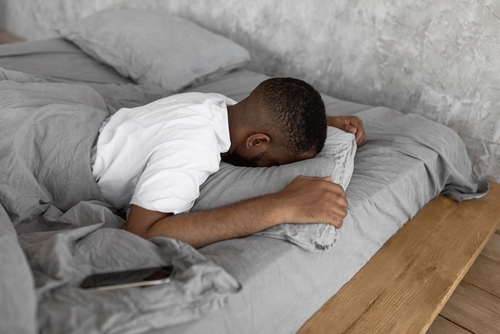The numbers show it—Suboxone works. According to recent surveys, nearly 75% of adults taking buprenorphine products like Suboxone didn’t misuse it. Misuse has even declined over the past few years.
But if your dose feels too low, some signs may show. Do you have cravings or feel irritable? Trouble sleeping or concentrating? These can signal your dose needs adjusting. Talk to your doctor.
A lower dose may not fully curb withdrawal or cravings. You may need a higher amount of this medication, buprenorphine, to feel right. Everyone’s needs differ, so work with your doctor to find what’s best for you. The goal is for you to live free of illicit opioid use, not just scrape by.
Don’t lose hope. With support and the proper treatment, you can overcome addiction. But speak up if your dose doesn’t seem enough—the right amount of Suboxone or similar medication can make all the difference in your recovery.

What Is Considered a Low Suboxone Dose?
If your Suboxone dose isn’t controlling your withdrawal symptoms or cravings, it may be too low. Suboxone doses are 2 mg buprenorphine to 0.5 mg naloxone and 8 mg buprenorphine to 2 mg naloxone. Generally, a low dose is considered anything under 8 mg of buprenorphine per day.
- Do you feel sick, anxious, or irritable between doses? A higher dose may provide steadier coverage.
- Are you still experiencing strong cravings or thoughts of using opioids? A moderate increase in Suboxone dose could help reduce cravings and support your recovery.
- Is your pain poorly managed on your current dose? Low doses may not provide enough analgesia for some. Discuss a potential dose increase with your doctor.
While higher doses come with risks like side effects, in some cases, the benefits of increasing your Suboxone dose to find the lowest effective amount outweigh the risks. But never adjust your dose without consulting your doctor.
Read more: Does Suboxone Get You High?

Signs My Suboxone Dose for OUD Is Too Low?
If you frequently think about using opioids or planning how to get drugs, your Suboxone dose could be too low. The COWS chart (clinical opiate withdrawal scale) shows opioid withdrawal symptoms like restless legs, sweating, and nausea. If you have high scores for multiple symptoms, talk to your doctor.
- Cravings: Drug cravings aren’t part of the COWS assessment but are a sign that your dose may need adjusting. Thinking often about using opioids or scheming to obtain them points to inadequate medication.
- Persistent pain: If you’re still experiencing moderate to severe pain most days, your current dosage probably isn’t enough. Talk to your doctor about safely increasing your dose or frequency.
- Needing breakthrough meds: If you frequently need to take extra opioid pain medication to manage pain in between Suboxone doses, your maintenance dose likely needs to be increased.
- Poor sleep: Difficulty sleeping at night due to uncontrolled pain is a sign your Suboxone dose may be inadequate for your needs. Lack of restorative sleep can also make pain feel worse.
- Limited activity: If pain limits your daily activities and ability to exercise or socialize, it’s worth discussing dose adjustments with your doctor to reclaim your quality of life. The right dose of Suboxone should reduce pain enough for you to function and participate in life.
- Withdrawal symptoms: If you start experiencing opioid withdrawal symptoms like nausea, diarrhea, sweating, or irritability before your next scheduled dose, your Suboxone dose is probably too low.
The key is to work closely with your doctor to find the lowest effective dose of Suboxone that controls your pain and improves your quality of life. Dose adjustments may involve taking more at a time, more often, or both.

Why is it Important to Get the Right Suboxone Does Right?
Getting the right dose of Suboxone is critical for overcoming opioid addiction and avoiding dangerous relapses. Without an adequate dose, you run the serious risk of relapse or even overdose.
During recovery, your brain’s tolerance for opioids decreases. A dose that once seemed normal could now prove lethal. People in chronic pain may turn to other drugs for relief if their Suboxone dose is too low, raising overdose risks.
Getting the right Suboxone dose often takes trial and error. Most people need a few days to adjust their initial dose before settling on the right level. Don’t be afraid to speak up if your dose isn’t meeting your needs. Your health and safety should be the top priority.
The key is finding the “Goldilocks dose” that’s just right for you—not too much, not too little. With the right Suboxone dose and comprehensive support, you can overcome addiction, avoid relapse, and start living a happier, healthier life.
Read more: Opiate Withdrawal Timeline: How To Physically & Mentally Prepare
Seeking Help to Start Healing
The most important first step is being honest with your doctor about how the current dose makes you feel. Don’t downplay withdrawal symptoms or cravings to avoid a higher dose. Likewise, don’t exaggerate side effects to get a lower dose.
If your Suboxone dose isn’t controlling your cravings or withdrawal symptoms, it may be too low. Don’t hesitate to call MD Home Detox. Our medical professionals at MD Home Detox can evaluate your situation, symptoms, and history to determine if a Suboxone dose adjustment or medication change may help. We aim to make recovery as comfortable as possible. Don’t go through this alone – help is just a call away.

